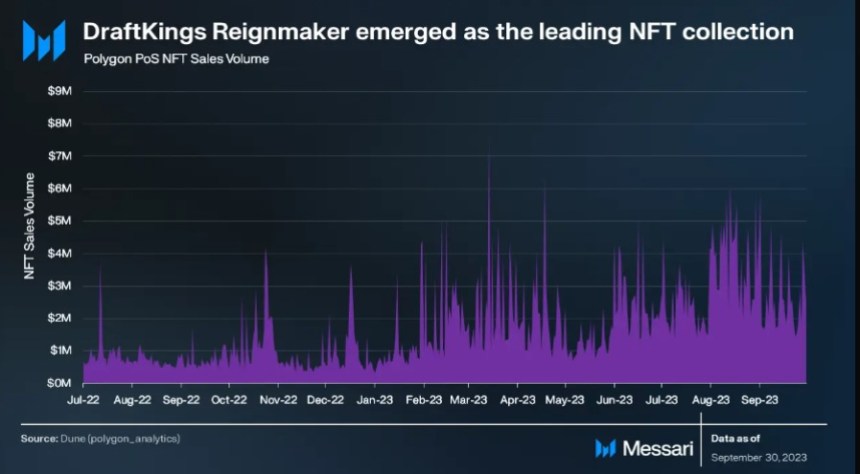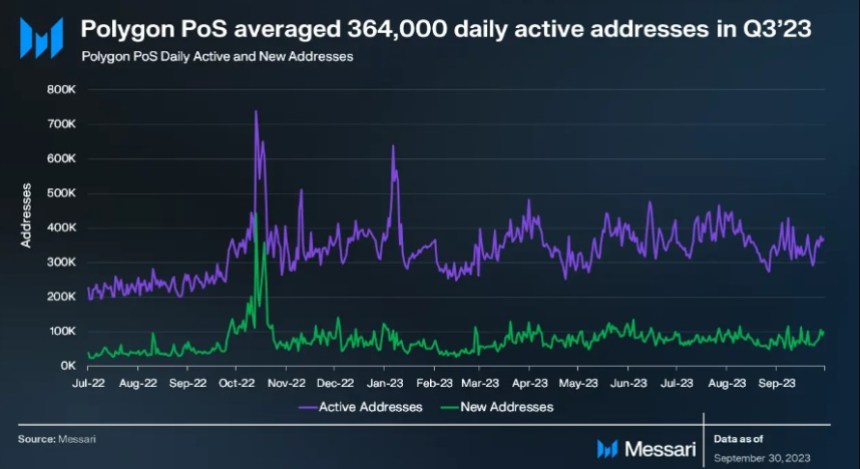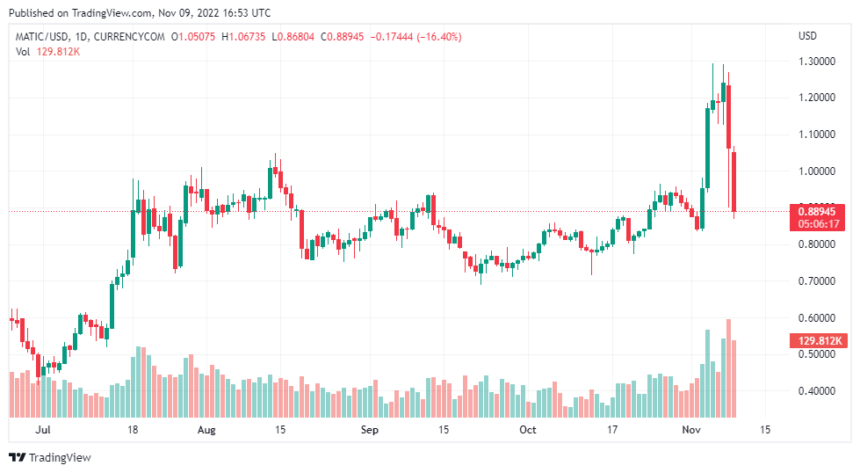Polygon is closing out 2023 on a high note as its native token, MATIC, experienced a significant surge over the past 24 hours, despite its founder highlighting a “painful ride”.
MATIC’s current price stands at $0.8939, accompanied by a 24-hour trading volume of $701,503,128.22. This represents a notable 4.20% price increase within the last 24 hours and a remarkable 14.10% increase over the past 7 days.
Polygon Founder Embraces Underdog Status
Despite a challenging journey throughout 2023, Polygon’s founder, Sandeep Nailwal, recently expressed his contentment with the platform’s underdog status. In a statement on X (formerly Twitter), Nailwal stated:
Polygon is back to where it’s the best at being an underdog. Not going to lie, it’s been a painful ride, the whole of 2023, but right now, it feels incredibly liberating to be the underdog again.
Furthermore, Nailwal went on to outline several reasons why he believes investors should feel bullish about Polygon’s prospects.
One key feature is Ethereum Virtual Machine (EVM) Compatibility, which allows Polygon to replicate the Ethereum environment as a rollup. This compatibility ensures that any application running on Ethereum or other EVM-compatible chains can be deployed onto zkEVM, Polygon’s layer 2 solution, with minimal modifications.
Another aspect highlighted is the utilization of Zero-Knowledge Proofs (ZKPs) for transaction validation. By leveraging ZKPs, Polygon enhances transaction speeds and reduces gas fees, addressing critical pain points experienced by users on other blockchain platforms.
Scalability is a paramount concern in the blockchain industry, and Polygon aims to address this challenge by executing smart contracts using zero-knowledge technology.
This approach ensures “scalability without compromising decentralization” and security, bolstering the platform’s overall appeal to developers and users alike.
Moreover, Polygon’s strategic affiliation with zkEVM positions it to leverage the existing ecosystem of over 400 decentralized applications (dApps) within the Polygon network.
This ecosystem includes a diverse range of DeFi protocols, gaming platforms, and NFT marketplaces. By capitalizing on this thriving ecosystem, Polygon aims to further solidify its position as a leader in the blockchain space.
Midterm Targets And Strategy For MATIC Price Action
Renowned analyst Captain Faibik has released a comprehensive analysis of the price action for Polygon’s native token, MATIC. In his assessment, Captain Faibik identifies key targets and a strategic approach for investors to capitalize on potential gains.
According to Captain Faibik’s analysis, MATIC’s midterm targets are projected at $1.20, $1.60, $2.50, and $4.00. These targets represent potential price levels that MATIC could reach based on historical patterns.
Notably, to manage risk and protect their investment, Captain Faibik recommends implementing a stop-loss strategy. If the weekly closing price of MATIC falls below $0.55, it is suggested to exit the position.
Furthermore, Captain Faibik advises investors to adopt a long-term mindset and hold their MATIC investment for a minimum of 60 days. This holding period enables investors to ride out short-term price fluctuations and potentially capitalize on the projected targets identified.
Featured image from Shutterstock, chart from TradingView.com





